Whether you play multiple instrument, or you are composing music for an ensemble, transposition is a vital skill to have as a musician. In this article, we will guide you through the techniques, tips, and challenges involved to successfully transpose Bari sax to clarinet. Let’s dive in and learn how to transpose Bari sax to bass clarinet!
The Baritone Saxophone in E flat
The Baritone saxophone is a transposing instrument in the key of E flat. This means that when the musician plays a C, we hear an E flat. In fact, we hear the Eb an octave lower as shown in the image below.
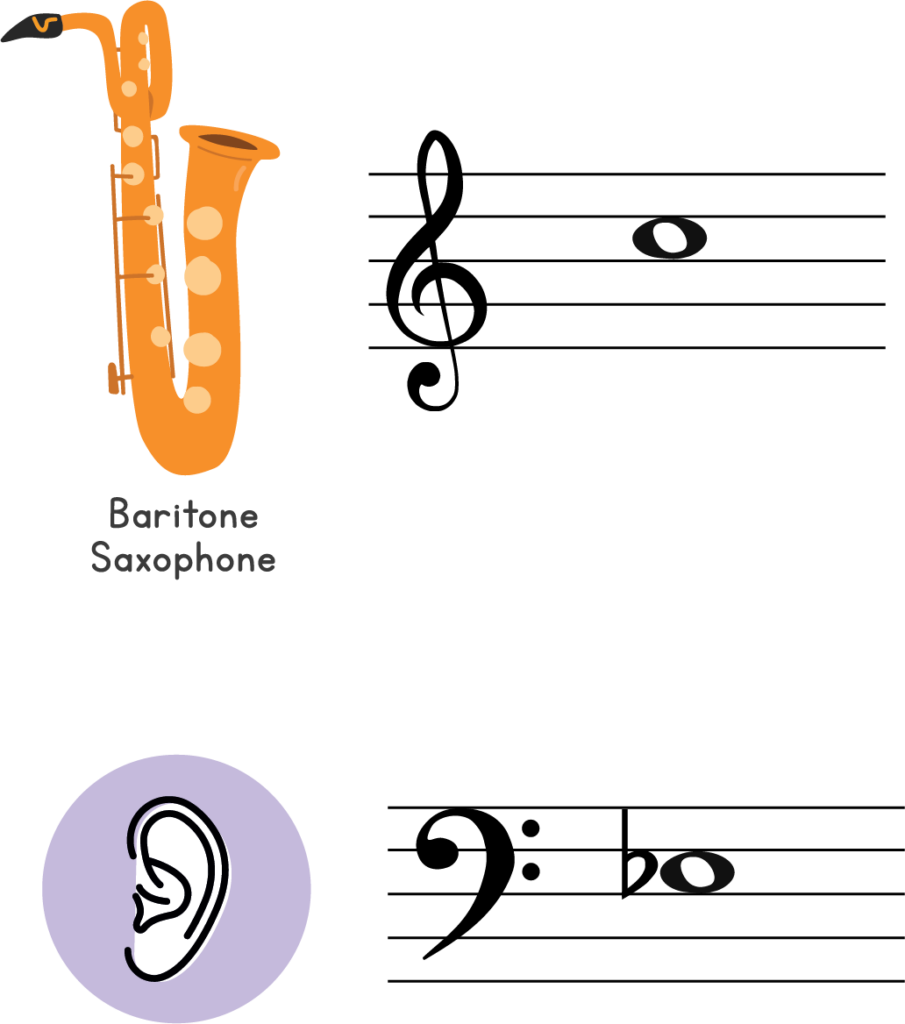
The Bass Clarinet in B Flat
The bass clarinet is a transposing instrument in the key of B flat. This means that when the clarinettist plays a C, we hear a B flat. As it’s the bass clarinet we actually hear the B flat an octave below.
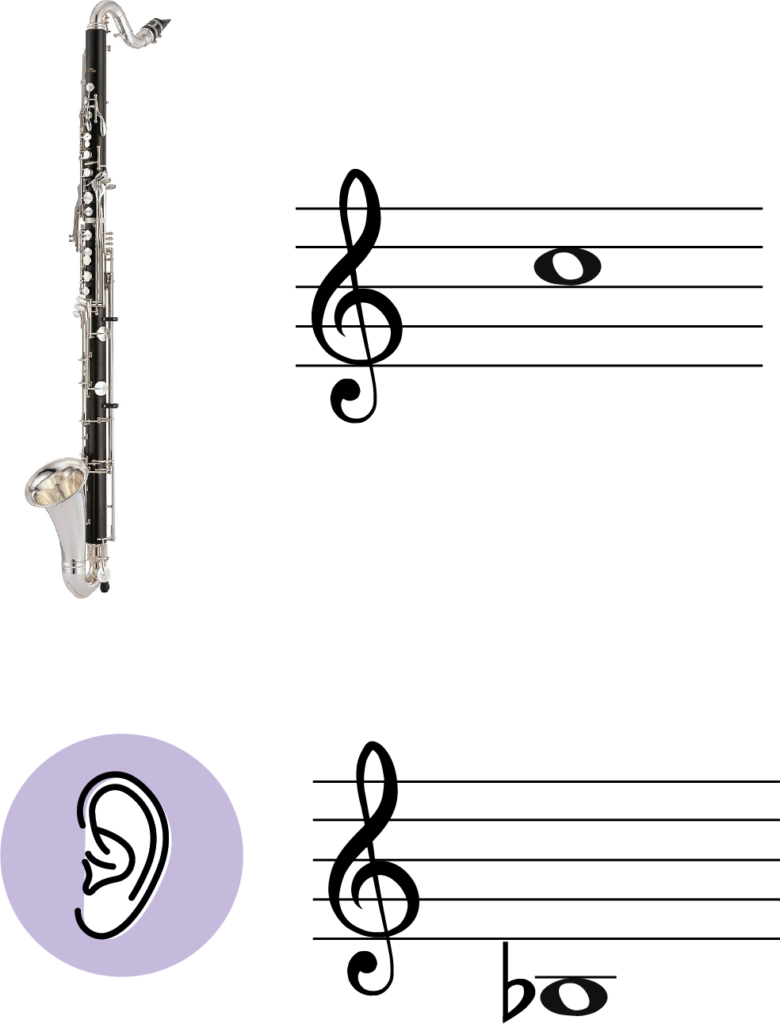
Transpose Bari Sax to Bass Clarinet
To transpose between both instruments we need to move from B flat to E flat. This is an interval of a perfect 4th, as E flat is the 4th note of the B flat major scale.
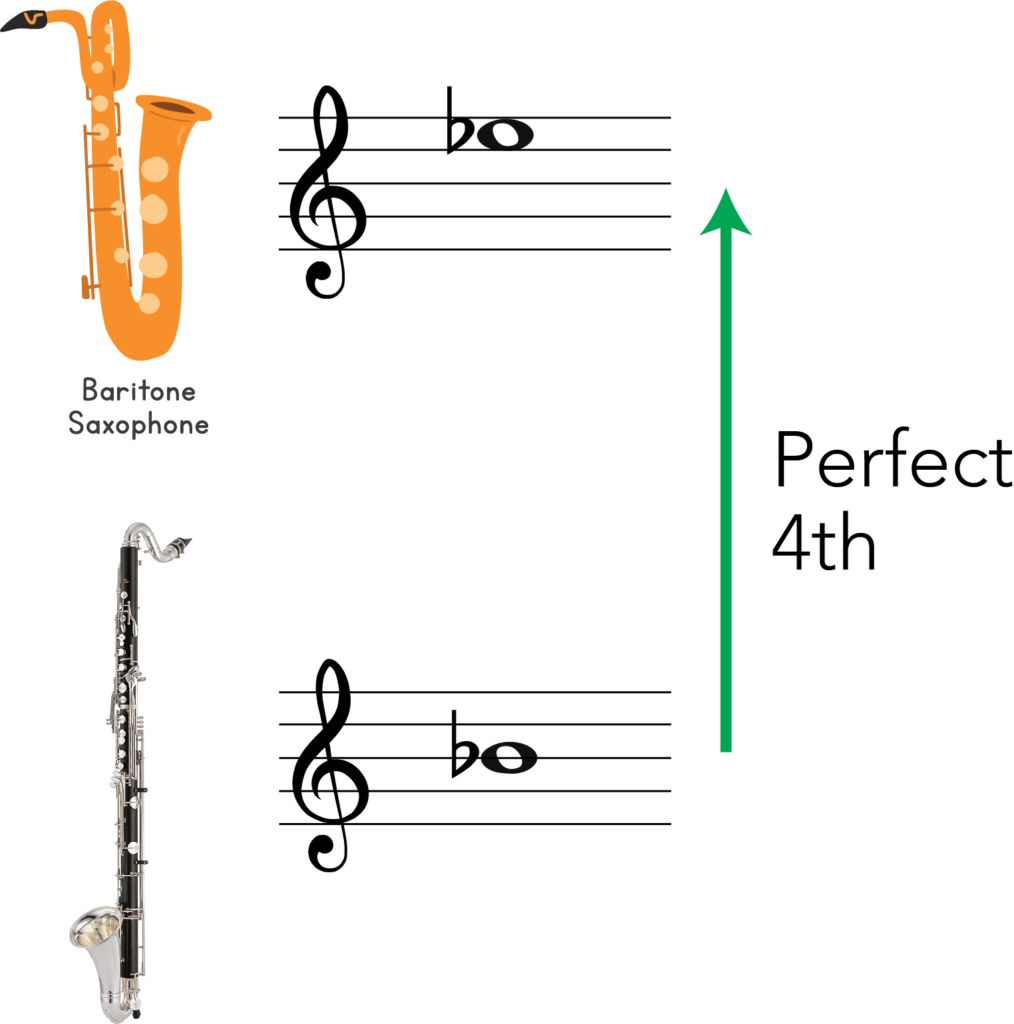
Here is a handy transposition chart to help you transpose Bari sax to bass clarinet.
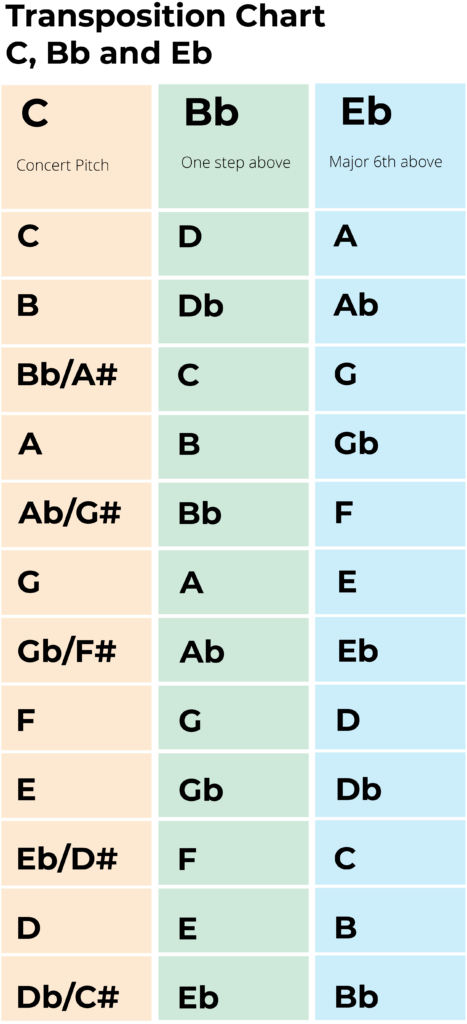
How To Transpose Up A Perfect 4th
This method has three steps:
- Transpose the key signature up a perfect 4th
- Move all the notes up a 4th
- Deal with the accidentals
(If you thought we could transpose each note one at a time, click here to see why NOT to do this)
Let’s try an example. Have a look at the melody below and let’s transpose it up a perfect 4th.

That’s correct, we are in B flat Major!
Step 1- Transpose The Key Signature
First let’s transpose the key signature. Can you transpose up a perfect 4th from Bb?

The 4th note of the B flat major scale is E flat. This means we now need the key signature of E flat major. Eb major has three flats – Bb, Eb and Ab.
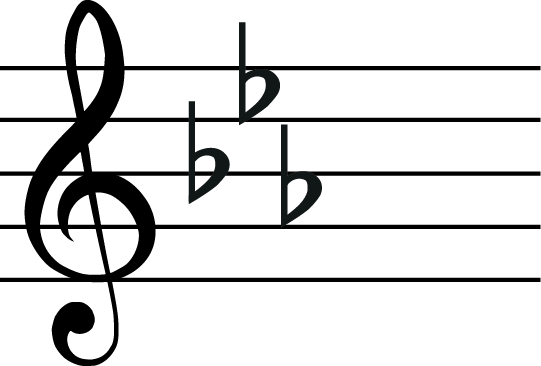
Here is the new key signature at the start of our melody.

Step 2- Move The Notes Up A 4th
Now we have changed the key signature, simply move all of your notes up a 4th.

As you can see, we have not moved the F sharp note yet. This is because it is not in the notes of the original key signature and so will need to be treated differently.
Step 3- Accidentals
In our original melody we have a F#. This note is not in the key of Bb major and so it will not be transposed correctly by the first 2 steps.
To transpose this note we treat it on its own. We can ask: what is a perfect 4th above F#? F# major actually has 6 sharps in it (F#, C#, G#, D#, A# and E#). The 4th note of this scale is B natural. Here is the final transposition alongside the original melody.
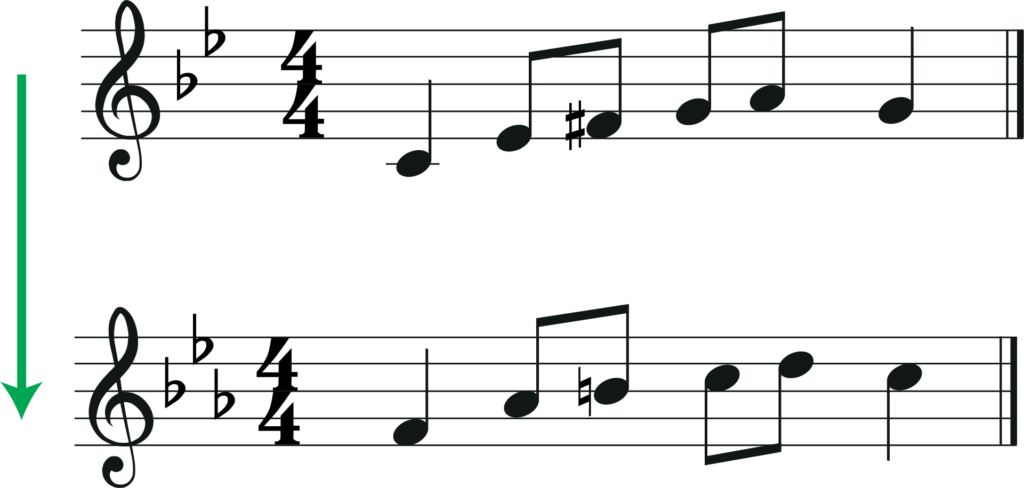
Suppose we didn’t know that F# major had six sharps, is there another way to make transposing this note easier?
The easiest method in this case would be to lower the F# a half-step to an F. Finding a Perfect 4th above F is much easier: it is B flat. Then we raise the Bb up a half-step to correct it to B natural.

Using Software to Transpose Automatically
You can transpose automatically by using notation software such as Sibelius and Musescore.
What’s next…?
- Learn more about transposition with our guide to transposing down by a perfect 4th.
- Learn more about alto sax transposition and clarinet in B flat transposition.
